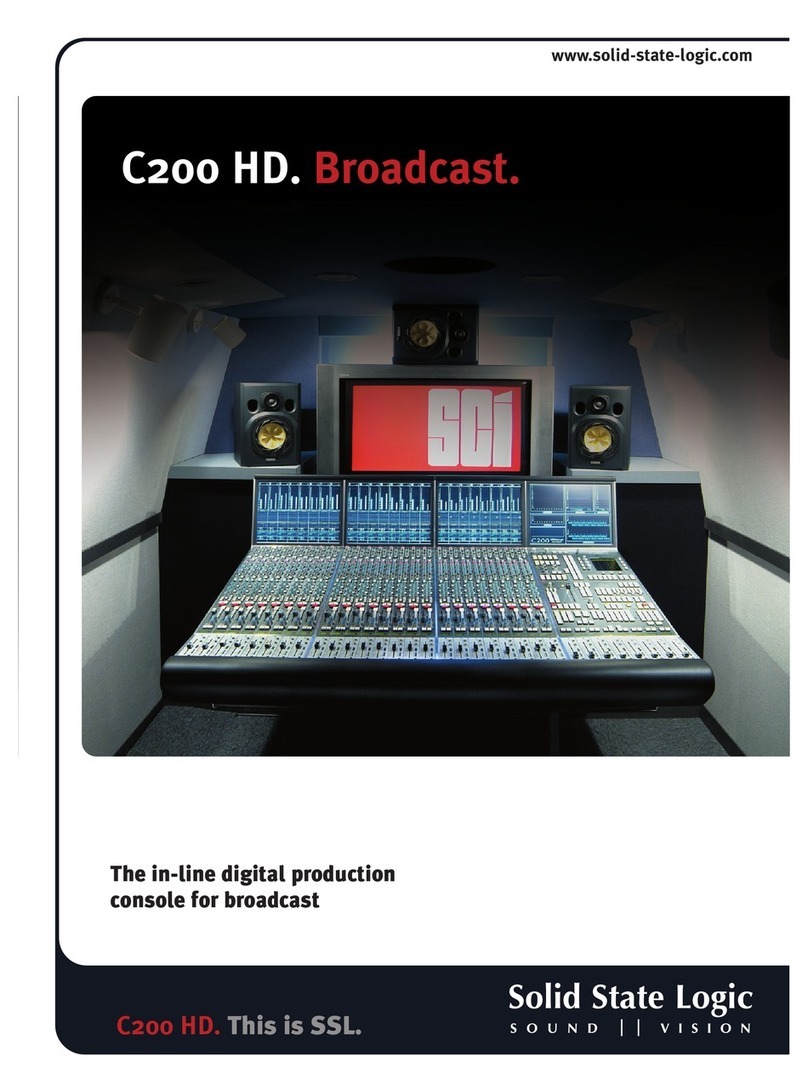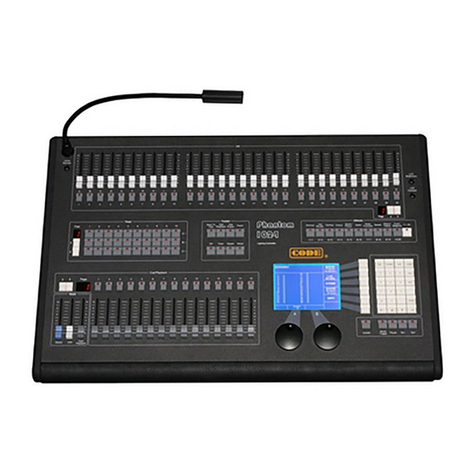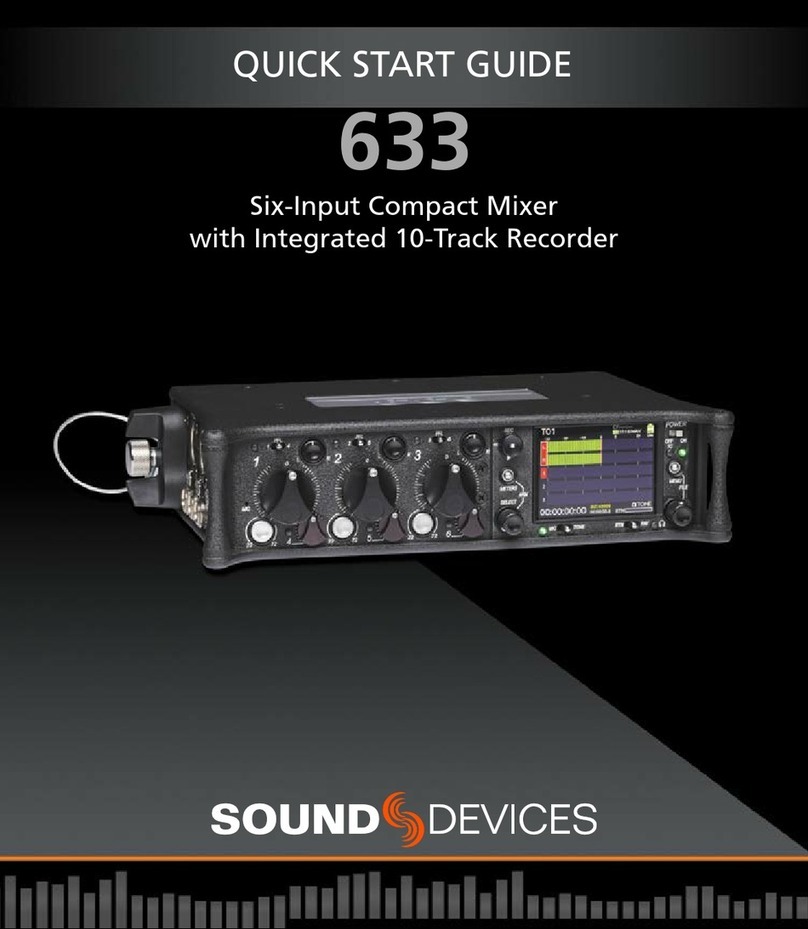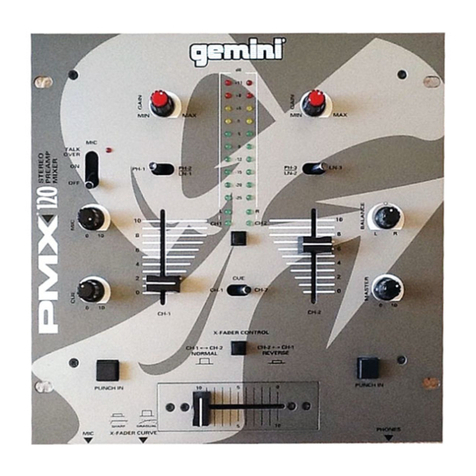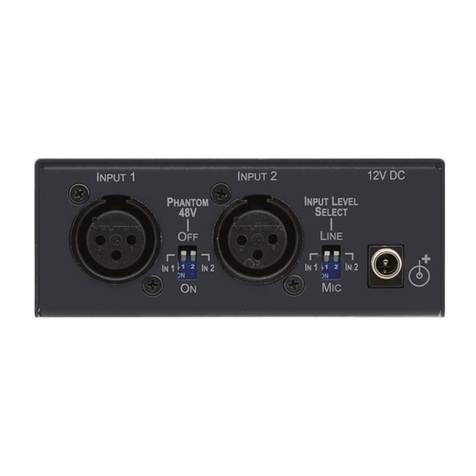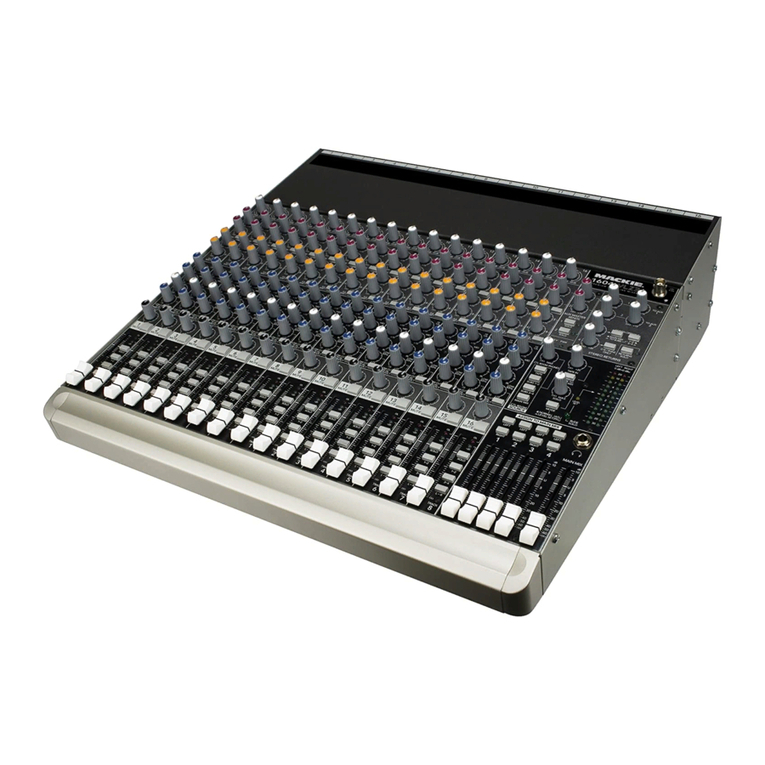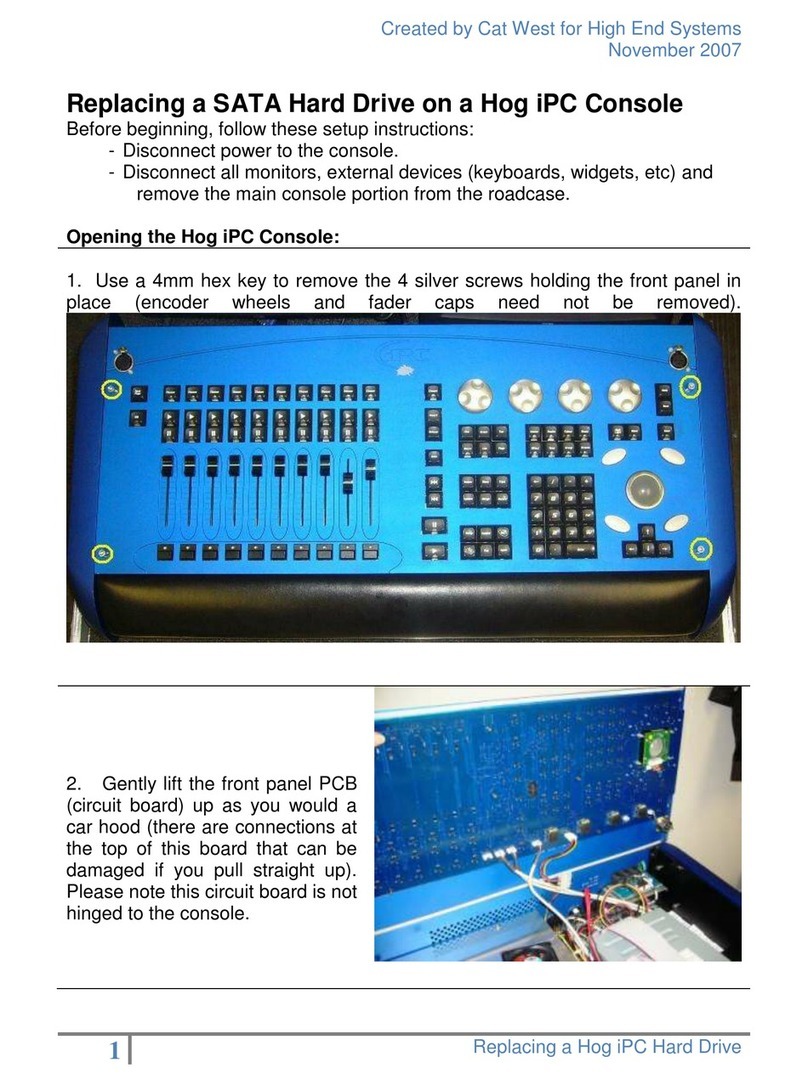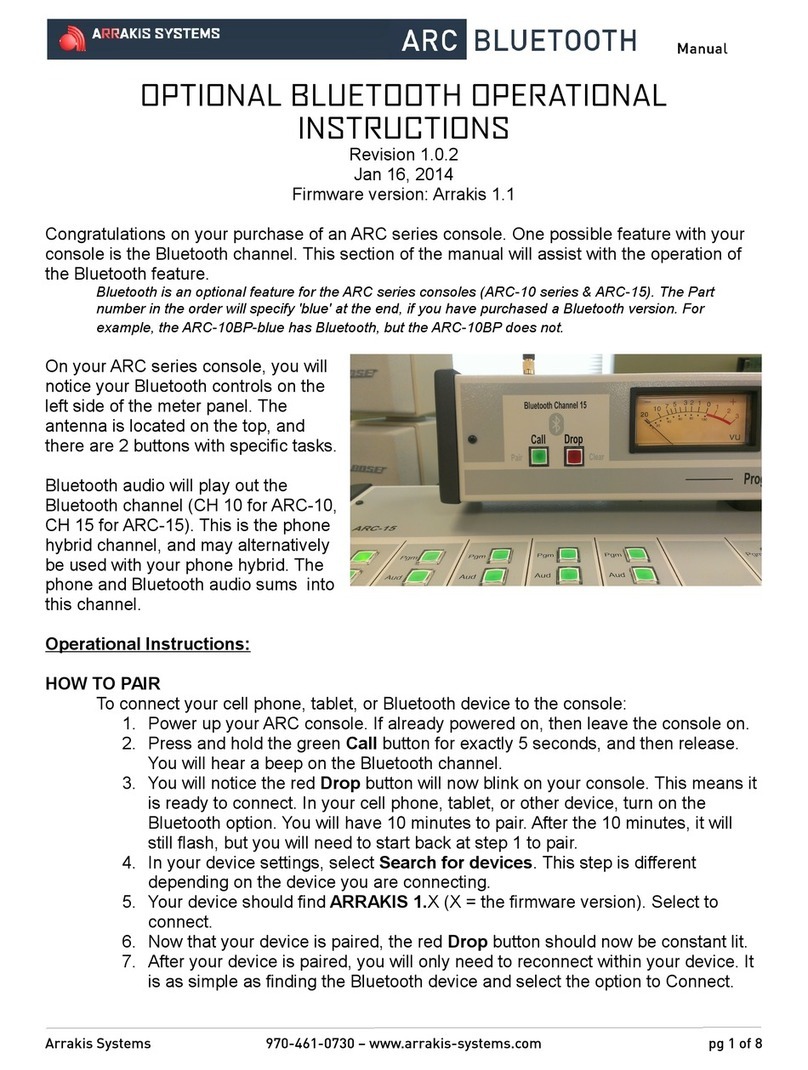Danfoss KGS User manual

KGS
Road Sentry Console
BLN-95-9055
DESCRIPTION
The Road Sentry console is a microprocessor-based controller with inputs and
outputs suitable for grade and slope machine positioning systems. The operator
interface has switches and displays to allow users to set up, operate and configure
the console as well as provide continuous operating information.
When used in the Road Sentry control system, the KGS positions both sides of a
paving or planing machine to achieve a controlled, flat road surface. Automatic
positioning is possible by measuring a grade reference and/or a gravity (slope)
reference. Manual operator positioning of either side is also possible.
The KGS console may be configured for different machine types and operating
preferences using a hidden access feature. The configuration variables may be
accessed with switch inputs for field adjustment or pre-set at the factory per customer
specification.
The console is intended to be permanently mounted and wired. There is a built-in motion switch to activate the valve drives.
It is equipped with a timer which may be actuated by a switch or a speed pickup.
.
.
FEATURES
• Interchangeable wand or ultrasonic grade sensors
• Easy setup and improved information available to op-
erator
• High intensity LED displays
• CAN network for communication with other controllers
and ultrasonic sensors
• Cast aluminum package with built-in vandal cover
• Drives KVF Servovalves, on/off valves or proportional
solenoid valves
• Fault recognition with diagnostics
• Full electrical and environmental protection
• Fewer electrical accessories and reduced machine wiring
possible
SYSTEM CONFIGURATION
The Road Sentry system consists of one KGS operator
console for each side of the machine, one MCX104A Slope
Sensor, which may be used by either side, and one or two
grade sensors for one or both sides. See the Road Sentry
System Configuration Diagram. The grade sensors may be
a MCX103 rotary wand and shoe type, or a non-contacting
KUS ultrasonic type. There is an option for a front-rear dual
slope sensor configuration using two MCX104A sensors.
The virtual position of the sensor input to the controller may
be adjusted at the controller.
Issued: July 1996
ORDERING INFORMATION
RELATED PRODUCTS AND ACCESSORIES
1. KUS ULTRASONIC SENSOR
A remote mounted non-contacting grade sensor com-
patible with the Road Sentry Console. See Bulletin
95-9053.
2. MCX103A1110 WAND SENSOR
A remote mounted wand and shoe sensor, plug compat-
ible with the KUS Ultrasonic Sensor. See Bulletin 95-8991.
3. MCX104A1018 SLOPE SENSOR
A remote mounted slope sensor compatible with the
Road Sentry Console. See Bulletin 95-8996.
4. KW01031
Coil cord for use with the KUS or MCX103A1110. Two
foot retracted to 10 foot extended. 14-pin straight MS
connector on one end and 10-pin straight MS connector
on the other.
5. KW01037
Coil cord for use with KUS or MCX103A1110. Two foot
retracted to 10 foot extended. 14-pin straight MS con-
nector on one end and 11-pin, 1/4-turn straight connector
on the other.
6. KG04005
Follower arm assembly. Ten inch wand length.
© Danfoss, 2013-09 BLN-95-9055 1

2
PART NUMBER CONFIGURATION
Hardware Configuration Table.
Road Sentry Console
Revision Letter
Control Application
(1) Asphalt paver
(2) Planer, reclaimer
Controller Outputs
(5) Solenoid or servovalve, high side switch
(6) Solenoid, low side switch
Display Configuration
(1) One setting/message display, non-backlit switches
(2) Two setting/message displays, non-backlit switches
(3) One setting/message display, backlit switches
(4) Two setting/message displays, backlit switches
Special Configuration
00 and as required
Mounting Configuration
(5) Bottom flange mount
(6) 1/2-13 side studs *
* Consult factory for availability
K G S A X X
To assist in configuring the hardware for the Road Sentry Console, determine the correct part number from the table below.
Contact Danfoss for assistance in specifying the required software.
Control Application
1. Asphalt paver control software is compatible with a 10
inch grade wand. Machine travel is 4 inches above and
1 inch below the setup reference zero. When resetting
auto mode (from manual mode) the prior setpoint is
saved and resumed. The machine will automatically
return to the previous setpoint.
2. Planer, reclaimer control software is compatible with a
25 inch grade wand. Machine travel is 10 inches below
and 2.5 inches above the setup reference zero. Actuating
the up/down toggle switch places the control in manual.
When resetting auto mode (from manual mode) the prior
setpoint is not saved but must be reset by the operator.
The motion interlocks are disabled with this option.
Controller Outputs
5. Solenoid valve or servovalve, high side switched. The
controller output is designed to drive servovalves, on/off
or proportional solenoid valves with the two valve coils
permanently grounded.
6. Solenoid valve, low side switched. The controller output
is designed to drive on/off or proportional solenoid
valves with the two valve coils permanently tied to
battery “+”.
Display Configuration
1. One setting/message display. The eight character
alphanumeric display is used for both setpoint position
and actual position. The setpoint/actual switch controls
which value is displayed. Switches are not backlit.
2. Two setting/message displays. The faceplate has one
eight character display for setpoint position and one for
actual position. There is no setpoint/actual switch.
Switches are not backlit.
3. One setting/message display, backlit switches. The
backlit switch configuration features illumination behind
each push switch that makes them night-readable. A
photo sensor turns the backlight on and off.
4. Two setting/message displays, backlit switches. The
backlit switch configuration features illumination behind
each push switch that makes them night-readable. A
photo sensor turns the backlight on and off.
Mounting Configuration
5. Bottom flange mount. This requires a flat surface with
two holes for 5/16 inch diameter fasteners.
6. 1/2-13 side studs. This requires a yoke with slots for the
studs.

3
TECHNICAL DATA
SPECIFICATIONS
SUPPLY VOLTAGE
9 (minimum) to 32 (maximum) Vdc
SUPPLY CURRENT
0.3 amps, maximum, plus valve current
ANALOG INPUTS (two available)
0 to 5 Vdc range of signal
100 kilohm effective input impedence
10 bit resolution
PULSE TIMING INPUT OR SWITCH (one available)
Pulse input: 4 Vdc minimum (20 to 15,000 Hz range)
Switch input: high (greater than 4 volts) to actuate
VALVE DRIVE (two available)
LOW CURRENT OUTPUTS
180 ma maximum current source (7.0 volt maximum
available)
Uni-directional configuration, high-side switched
HIGH CURRENT OUTPUTS
3 amp maximum current, PWM and on/off
High side switched or low side switched
Uni-directional
The choice of valve type is done in software through
Hidden Access.
SENSOR POWER SUPPLY
(Three common output pins available)
5±.25 Vdc regulated
500 ma maximum total current
CAN CONNECTION
Two wire shielded cable (Consult Danfoss)
ENVIRONMENTAL
OPERATING TEMPERATURE
-40° to 70° C (-40° to 158° F)
MOISTURE
Protected against 95% relative humidity. Packaged to
withstand high pressure washdowns
VIBRATION
Withstands a random vibration spectrum from 50 to 2000
Hz representative of the construction environment
SHOCK
50 Gs
DIMENSION
See the Dimensions drawing
The control console is protected against reverse polarity.
Static discharge, EMI and RFI, electrical transients, including
load dumps, are resisted by the controller.
Pulse timing inputs are protected for short circuits to positive
battery or ground. Analog inputs and sensor power supply
are protected for short circuits to ground.
Valve drive outputs are protected against shorts to positive
battery or ground. Opens or shorts can be detected and
diagnosed.
ELECTRICAL
The Controller should be removed if any welding is done to
the machine.
The controller has internal fault detection and confinement to
minimize inappropriate output activity.

4
DIMENSIONS
Dimensions of the KGS in Millimeters (Inches). 1961

5
ROAD SENTRY SYSTEM CONFIGURATION DIAGRAM
1957
KGS
CONTROL
CONSOLE
KGS
CONTROL
CONSOLE
KUS
ULTRASONIC
GRADE SENSOR
MOTION
INPUT
CONTROL
VALVE
MCX104A
SLOPE
SENSOR
CONTROL
VALVE
MCX104A
OPTIONAL
SENSOR
KUS
ULTRASONIC
GRADE SENSOR
MCX103A
WAND
GRADE
SENSOR
MCX103A
WAND
GRADE
SENSOR
ELECTRICAL CONNECTION
See the Connector Diagram. A 28-pin ITT Cannon connector provides all input and output to the KGS Controller per the table
below. See the Road Sentry System Configuration Diagram for a pictorial view of the system level connections.
The mating connector assembly for the KGS console must be ordered separately. The Danfoss part number is
K18169, which is composed of 28 pins, 8 seal plugs, 1 connector and 3 connector keys.
9 8 7 6 5 4 3 2 1
19 18 17 16 15 14 13 12 11 10
28 27 26 25 24 23 22 21 20
1843
Pin Orientation Shown is for the Device, not the Mating, Connector.
CONNECTOR DIAGRAM
Pin Function Pin Function Pin Function
1 Battery + 10 Ground 20 N/C
2 Valve raise 11 Ground 21 N/C
3 Valve lower 12 Ground 22 Sensor power
4 PPU/travel 13 Ground 23 Sensor power
5 Analog in 0 14 Ground 24 Sensor power
6 Analog in 1 15 Ground 25 CAN address 0
7 CAN shield 16 Ground 26 CAN address 1
8 CAN low 17 Ground 27 CAN address 2
9 CAN high 18 Ground 28 CAN address 3
19 Ground

6
CORRECTIVE ACTION FOR UNINTENDED OPERATION
123456789012345678901234567890121234567890123456789012345678901212345678901234567890123456789
1
2345678901234567890123456789012123456789012345678901234567890121234567890123456789012345678
9
1
2345678901234567890123456789012123456789012345678901234567890121234567890123456789012345678
9
1
2345678901234567890123456789012123456789012345678901234567890121234567890123456789012345678
9
1
2345678901234567890123456789012123456789012345678901234567890121234567890123456789012345678
9
123456789012345678901234567890121234567890123456789012345678901212345678901234567890123456789
WARNING
Automatic controls produce actuator drive signals which may
not be anticipated by the persons near the controlled machine
element. Caution should be excercised and appropriate
warning labels affixed.
Road Sentry control failures can produce errors in machine
motion and in displayed information. Unintended motion can
result, which may cause erratic movements or no machine
movement. Unintended motion is a potentially unsafe
situation.
Unintended operation of the electrical control system can
result from failure of the controller, sensor or wiring. Unintended
operation can occur without any input from the operator or
can occur because the operator reacts to an incorrect message
from the displays. Unintended operation which is not corrected
may result in small errors or in continuous travel of controlled
cylinders.
1. Switch the console control to “manual.” This will stop
operation of the controller if the fault is in the sensor or
due to an incorrect input signal by the operator. This may
not correct controller faults and will not correct valve
wiring faults.
2. Turn off controller power. This will defeat controller or
sensor faults but not all wiring faults to the valves.
Ground switched valves would be particularly isolated
from this corrective action, as they are normally powered
separately from the controller.
3. Switch off the power supply to the valves. This will
prevent machine motion under all circumstances,
provided the power supply is switched close enough to
the battery to prevent any shorts to power.
THEORY OF OPERATION
The KGS console receives information from sensors mounted
on the machine and produces an electrical valve drive to
move positioning cylinders in a closed loop. Control logic is
determined by built-in software and by instructions received
from the operator’s use of switches. Continuous operating
information is provided to the operator with displays which
are continuously monitoring the sensor and controllers.
Information is communicated between the left side and the
right side via a CAN network.
CONSOLE INTERFACE PANEL
The console interface panel has eight switches and one or
two displays to allow information to be transmitted between
the operator and the machine. See the Operator Console
Panel Diagram. There are dedicated, labelled switches for
the frequently used functions. One display provides setting
information as well as special messages, and one display
provides continuous control status information. There is an
audible alarm to assist in setup and diagnostics. An optional
backlight is available. Displays and switches are further
described on following page.
SETTING/MESSAGE DISPLAY
The eight character alphanumeric display in the center
of the console is used for displaying the setpoint position,
actual position, sensitivity setting, display offset and
fault messages. Some messages are more than eight
characters in length and are displayed by scrolling the
message across the screen. See the Setting Message
Display Diagram.
STATUS DISPLAY
The upper left LED array displays an arrow indicating the
error between setpoint and actual machine position. A
full up arrow indicates 1 inch error below setpoint, a full
down arrow indicates 1 inch error above setpoint, and a
flat line indicates no error. There are also four gradations
between full on and off. See the Status Display Diagram.
GRADE/SLOPE SWITCH
Pressing the grade/slope switch selects the sensor to be
used for automatic control.
SETPOINT/ACTUAL SWITCH
Pressing the setpoint/actual switch selects the display of
either the setpoint machine position or actual position.
AUTO/MANUAL SWITCH
Pressing the auto/manual switch selects either auto or
manual control. In auto mode, the toggle switch changes
the setpoint.
For pavers: In manual control, the toggle switch functions
as a jog switch. For pavers, this does not affect the
setpoint; changing from manual mode to auto mode
returns the controller to its previous setpoint.
For planers: Auto mode is exited when the toggle is
activated and the toggle switch functions as a jog switch.
For planers, the setpoint is established at the new
machine position when “auto” is pressed.
UP/DOWN TOGGLE SWITCH
The toggle switch changes machine position in both
auto and manual mode. In auto mode, the up/down

7
CONSOLE INTERFACE PANEL
(continued)
toggle changes the setpoint for machine position when
automatic control is established. In manual mode, it
functions as a jog switch. The toggle switch is also used
as an increase or decrease switch for all control settings
and displays.
NULL SETPOINT SWITCH
Pressing the null setpoint switch selects the sensor’s
current position as its new setpoint position. It is also
used with the display offset switch to change the setpoint/
actual display reference position.
SETUP SWITCH
This switch is used to assist in adjusting the grade or
slope sensor to the desired machine position and to
reestablish setpoint/actual display reference values.
DISPLAY OFFSET SWITCH
Pressing the display offset switch while using the toggle
switch adjusts the setpoint/actual value being displayed
to any desired value, shifting the effective reference
point. Both setpoint and actual displays are changed
simultaneously. Holding this switch and pushing the null
setpoint switch will alternately zero the display offset or
zero the displayed setpoint.
SENSITIVITY SWITCH
Pressing the sensitivity switch while using the toggle
switch adjusts the controller’s sensitivity. Adjusting the
sensitivity changes the amount of machine position error
to get full valve drive but doesn’t change the valve drive
deadband.
AAAAAAA
AAAAAAA
NULL
SETPNT
7
SENSOR
GRADE/SLOPESET PNT/ACTAUTO/MANUAL
STATUS
INDICATOR
SETTING AND
MESSAGE
DISPLAY
UP/DOWN
TOGGLE
SWITCH
PUSH
SWITCHES
FOR
CONTROL
SETTING
FUNCTION
SELECT
LED
CONTROL
MODE
SETUP
DISPLAY
OFFSET
SENSI-
TIVITY
DISPLAY
MODE
PUSH
SWITCHES
FOR
FUNCTION
SELECT
2.05 %
OPERATOR CONSOLE PANEL DIAGRAM
SETTING/MESSAGE DISPLAY DIAGRAM
SETPNT/ACT
7
SETPNT/ACT
SETPNT/ACT
£
SENSITIVITY
S:
1
Slope Setpoint 2.05%, No Display Offset
Actual Grade 22.52 in., No Display Offset
Grade Setpoint 3.00 in., Display is Offset
Control Sensitivity Value 6.7
1958
1959

8
100
-100
VALVE STEP
VALVE STEP
-10.0 -0.1
.01 10.0
ERROR (IN.)
OUTPUT (%)
ERROR DEADBAND ADJUSTMENT
ADJUST
ADJUST
HIDDEN ACCESS
STATUS DISPLAY DIAGRAM
Control Nulled (Within Deadband)
Valve Drive Less Than 25%
Valve Drive 25% to 50%
Valve Drive 50% to 75%
Valve Drive 75% to 100%
Valve Full On
Control Loop Indicators Active in Auto or Manual Mode
1960
OPERATOR CONSOLE SETUP
The console has two setup values which may be adjusted to
enhance machine operation. The first, sensitivity, affects
control responsiveness. See the Sensitivity, Error Deadband
And Valve Step Diagram.The second, display offset, is a
convenient way to reference the machine position display to
the work surface.
Sensitivity is adjusted by actuating the toggle switch with the
sensitivity switch pushed in. Display offset is changed by
actuating the toggle switch with the display offset switch
pushed in. A zero display value may be obtained by pressing
the null setpoint key while holding the display offset key
down.
The control console may be set up for many different types
of machines and to accomodate various operating conditions
which change infrequently. These are selected by accessing
the control parameters with a switch sequence on the operator
panel, then selecting the desired configuration variable and
its desired value. See Table A. Hidden Access Configuration
Variables for a list of variables which are available.
There are three levels of hidden access which are available:
factory, dealer and foreman. The assignment of configuration
variables to a particular hidden access level is accomplished
with the special configuration section of the ordering code.
Consult Danfoss.
The foreman level is accessed with the sensitivity switch and
null switch in sequence. Dealer access variables are available
with a second switch sequence from the foreman access
mode. Access to the dealer level parameters also gives
access to all foreman level parameters. Variables
designated as factory access are factory-set and cannot be
changed in the field.
Error deadband and valve step are adjustments which are
provided which would normally be assigned to foreman
access. Error deadband is the amount of sensor travel which
can occur without valve drive. The foreman should set the
relevant error deadband configuration variable (slope, wand
or ultrasonic) depending on which type of sensor he is using
(a pendulum for slope, a wand or ultrasonic for grade) and
leave the other two at their factory setting. Valve step adjust
is the amount of step valve drive provided with a sensed error
just outside the error deadband. When adjusting valve step,
the setting/message display shows raise or lower cylinder
speed if pushing the setpoint/actual switch. See the Sensitivity,
Error Deadband And Valve Step Diagram.
Variables not used by the particular KGS ordered will not be
displayed when scrolling through the hidden access list.
100
OUTPUT (%)
40
ERROR
DEADBAND
10.0
ERROR (IN.)
-40
-10.0
-100
VALVE STEP ADJUSTMENT
ERROR
DEADBAND
ADJUST
ADJUST
1849 1850
1848
SENSITIVITY, ERROR DEADBAND AND VALVE STEP DIAGRAM
S=10.0 S=1.0
VALVE STEP
10.0
0.2
-0.2
VALVE STEP
-10.0
ERROR (IN.)
-100
S=10.0S=1.0
100
OUTPUT (%)
ERROR
DEADBAND
ERROR
DEADBAND
SENSITIVITY ADJUSTMENT
ADJUST
ADJUST

9
Table A. Hidden Access Configuration Variables.
HIDDEN ACCESS
(continued)
DIAGNOSTIC MESSAGES
The control console can recognize many of the faults or
errors which may potentially occur in the sensors, valves,
operator console or wiring. It will report the condition on one
or both displays, sound the alarm and may shut the control
down if faulty machine operation is possible.
Faults may inhibit or stop valve drive when in auto mode but
will not in manual mode. Faults will clear when the cause is
repaired or eliminated.
The KGS console is pre-programmed with 21 diagnostic
English messages which aid the operator in taking corrective
action. For faults which do not turn valve drive off, the display
fault message alternates with the normal operating
information.
Configuration Descripton Of Range Of Values Suggested Suggested
Variable Configuration Variable Default Access Level
Battery Control voltage supply 12V, 24V 24V Dealer
Alarm Audible alarm switch off/on on Foreman
Displayed units Distance measure units in,ft,mm in Foreman
Slope sensor configuration Quantity of slope sensors used single, dual single Factory
Left side wand hub Hub location for grade sensor left, right left Foreman
Right side wand hub on left side or right side left, right right Foreman
Valve type Tow point valve type servo, on/off, proportional proportional Dealer
Coil/drive type Tow point valve coil wiring dual lo, dual hi, single dual hi Dealer
Application Machine type software planer, paver paver Factory
Interlock Motion sensor type none, external, speed, switch external Factory
(motor PPU or handle switch)
Display configuration No. of alpha/numeric displays single, dual single Factory
PPU pulses Motor speed pickup pulses 200-30,000 10,000 Dealer
per 1000 ft or per 300 m
Interlock travel speed Machine speed to turn control 0.0 to 20.0 ft/min or 0 to 7.0m/min 10.0 ft/min Dealer
on or off
Switch interlock delay Time delay after forward motion 0.0 to 10.0 sec 10.0 sec Dealer
switch to turn control on
Front slope sensor weight Effective position of slope sensor 0 to 100% 50% Foreman
(from front sensor)
Slope error deadband Slope error at start of valve drive 0.0% to 100% 0.00% Foreman
Wand error deadband Grade error at start of valve drive 0.0 in to 1.0 in or 0.0 to 25.0 mm .02 in Foreman
Ultrasonic error deadband Grade error at start of valve drive 0.0 in to 1.0 or 0.0 to 25.0 mm .04 in Foreman
Wand error limit Grade error at valve drive hold .10 to 4.0 in or 2.0 to 100 mm 1.0 in Foreman
Ultrasonic error limit Grade error at valve drive hold .10 in to 4.0 in or 2.0 to 100 mm 1.0 in Foreman
Servo frequency PWM frequency for servo valve 100 to 200 Hz 200 Hz Dealer
On/off frequency Pulse frequency for time 1 to 10 Hz 5 Hz Dealer
proportional valve
Proportional frequency PWM frequency for proportional 40 to 160 Hz 150 Hz Dealer
solenoid valves
Left side raise valve step Valve voltage % at start of raise 0 to 60% 35% Foreman
(servo or proportional ) leftside
Right side raise valve step Valve voltage % at start of raise 0 to 60% 35% Foreman
(servo or proportional ) right side
Left side lower valve step Valve voltage % at start of lower 0 to 60% 35% Foreman
(servo or proportional ) left side
Right side lower valve step Valve voltage % at start of lower 0 to 60% 35% Foreman
(servo or proportional ) right side
Left side raise on/off Valve on time at start of raise 1 to 50 msec 20 msec Dealer
valve step left side
Right side raise on/off Valve on time at start of raise 1 to 50 msec 20 msec Dealer
valve step right side
Left side lower on/off Valve on time at start of lower 1 to 50 msec 20 msec Dealer
valve step left side
Right side lower on/off Valve on time at start of lower 1 to 50 msec 20 msec Dealer
valve step right side

10
CUSTOMER SERVICE
NORTH AMERICA
ORDER FROM
Danfoss (US) Company
Customer Service Department
3500 Annapolis Lane North
Minneapolis, Minnesota 55447
Phone: (763) 509-2084
Fax: (763) 559-0108
DEVICE REPAIR
For devices in need of repair or evaluation, include a
description of the problem and what work you believe
needs to be done, along with your name, address and
telephone number.
RETURN TO
Danfoss (US) Company
Return Goods Department
3500 Annapolis Lane North
Minneapolis, Minnesota 55447
EUROPE
ORDER FROM
Danfoss (Neumünster) Company & Co.
Order Entry Department
Krokamp 35
Postfach 2460
D-24531 Neumünster
Germany
Phone: 49-4321-8710
Fax: 49-4321-871-184
Table of contents


